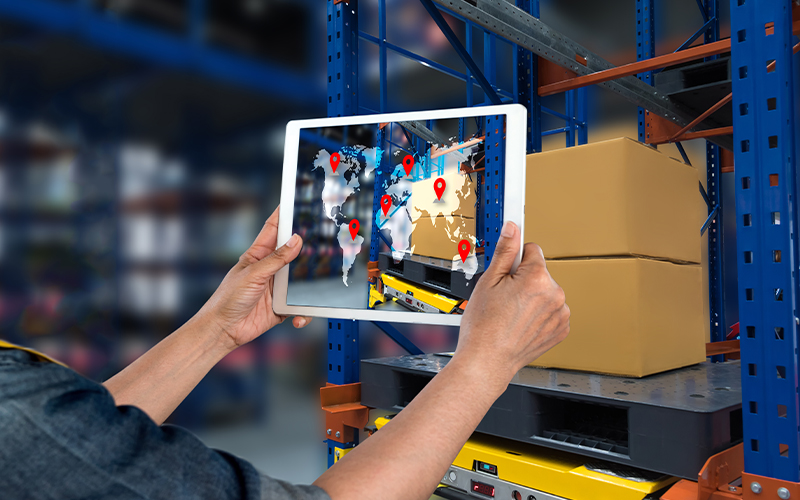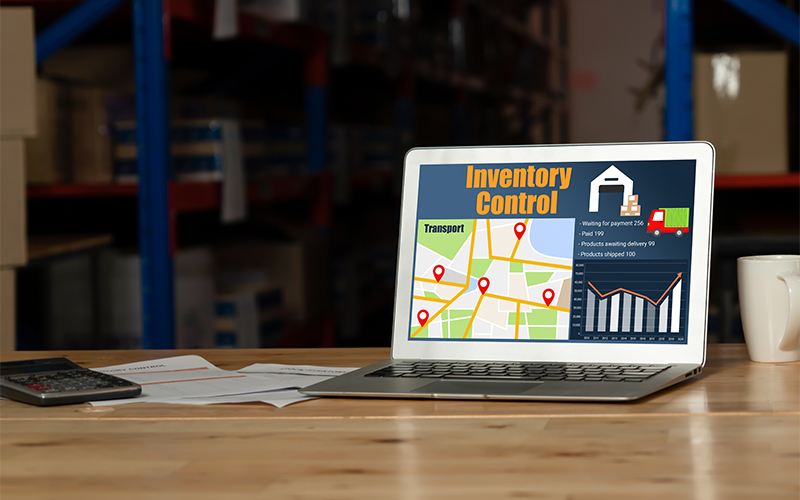Supply Chain
Automation Trends that will Revolutionize Supply Chain Management
In a dynamic marketplace, one of the most critical factors for the success of an enterprise is the speed at which it provides output. Legacy supply chain systems, that are the backbone of any product-based organisation, are slow and siloed. Enhancing the speed of supply chain functions can be a game changer. Digitalisation and strategic use of innovative technologies have a major role to play here.
Supply chain management begins with the procurement of raw materials and spans the stages of production and delivery as well. These processes are performed manually in a typical supply chain. Manual supply chain management is prone to inaccuracies and delays that can impact hyper-productivity*.
There are certain critical areas that need to function seamlessly for efficient supply chain management:
- An essential element of supply chain management is processing documents such as delivery orders, receipts, bills, etc. In manual systems, these documents are manually sorted before the start of production.
- An efficient supply chain requires seamless transportation, without any delays of materials, through different production stages.
- Warehousing is another important part of supply chain management. It entails the movement of products into and out of the warehouse. These movements can be prone to lapses and delays.
All these processes function in a sequential manner and facilitate the procurement, purchase, and delivery of products to the final consumer. A business's competitive edge in the market increases when different supply chain management processes are automated.
Main Aspects of Supply Chain Automation
Automating supply chain management entails the deployment of a number of technologies, including Robotic Process Automation (RPA), Artificial Intelligence (AI), and Machine Learning (ML). RPA streamlines different logic-based processes by automating them. Automation of this kind eliminates errors and enhances speed.
Cloud services provide safe and secure storage of large volumes of data and provide access to decentralised data that can be easily accessed by various stakeholders. ML helps in accurate demand forecasting to optimise production planning and control.
AI manages complex operations in minimal time. This includes detailed planning of labour and machine capacity, customer requirements, material and product needs, etc. Automation of end-to-end supply chain management optimises each stage of the supply chain. Automating repetitive processes, accurate data forecasting, and planning make the supply chain more resilient.
Supply chain Automation Trends
Focus on Data Analytics
Data is increasing at an exponential rate. It is becoming increasingly difficult for humans to keep track of multiple business activities and perform data analysis. In this regard, technologies like AI and ML are crucial. AI can transform data to provide valuable insights and ML facilitates predictive and prescriptive analysis.
Enterprise-centric Robots
As technology advances, we are likely to witness advanced robots in action. These robots will perform different functions and will be capable of communicating with each other and with supply chain automation.
Autonomous Systems
Autonomous technologies like drones, robots, and vehicles, that function independently, are expected to revolutionise how the supply chain functions. Autonomous technologies will optimise processes in the supply chain automation. They will enhance efficiency and offer more transparency in supply chain management.
Hyper automation
Hyper automation is the integration of technologies like AI and ML with RPA. This makes automation intelligent and the automation is capable of making decisions in addition to automating routine processes. Hyperautomation is expected to play a vital role in functions such as warehousing, logistics, production, and more.
Digital Supply Chain Twin (DSCT)
As the name suggests, a digital supply chain replicates an existing supply chain. It is the basis for end-to-end decision-making in a supply chain automation. It enhances situational awareness and facilitates accurate decision-making.
Cybersecurity Mesh
As the supply chain embraces automation and becomes more digital, its vulnerability to cyber threats increases. A cybersecurity mesh secures digital supply chains by protecting digital data, systems, and devices.
Sustainable Models
As the thrust on sustainability grows, automated supply chains will need to include tools and techniques that help build sustainable supply chain models. These tools will optimise different supply chain functions ranging from planning, sourcing and manufacturing to delivery.
Embracing emerging technologies is no longer an option but a must-have for supply chain management. Businesses across the globe have realised the benefits offered by supply chain automation and are making a beeline to automate their supply chains. A Gartner report states that 34% of supply chain leaders say that adapting to new technology is the most important strategic change that supply chain organisations will face five years from now.
* For organizations on the digital transformation journey, agility is key in responding to a rapidly changing technology and business landscape. Now more than ever, it is crucial to deliver and exceed on organizational expectations with a robust digital mindset backed by innovation. Enabling businesses to sense, learn, respond, and evolve like a living organism, will be imperative for business excellence going forward. A comprehensive, yet modular suite of services is doing exactly that. Equipping organizations with intuitive decision-making automatically at scale, actionable insights based on real-time solutions, anytime/anywhere experience, and in-depth data visibility across functions leading to hyper-productivity, Live Enterprise is building connected organizations that are innovating collaboratively for the future.






